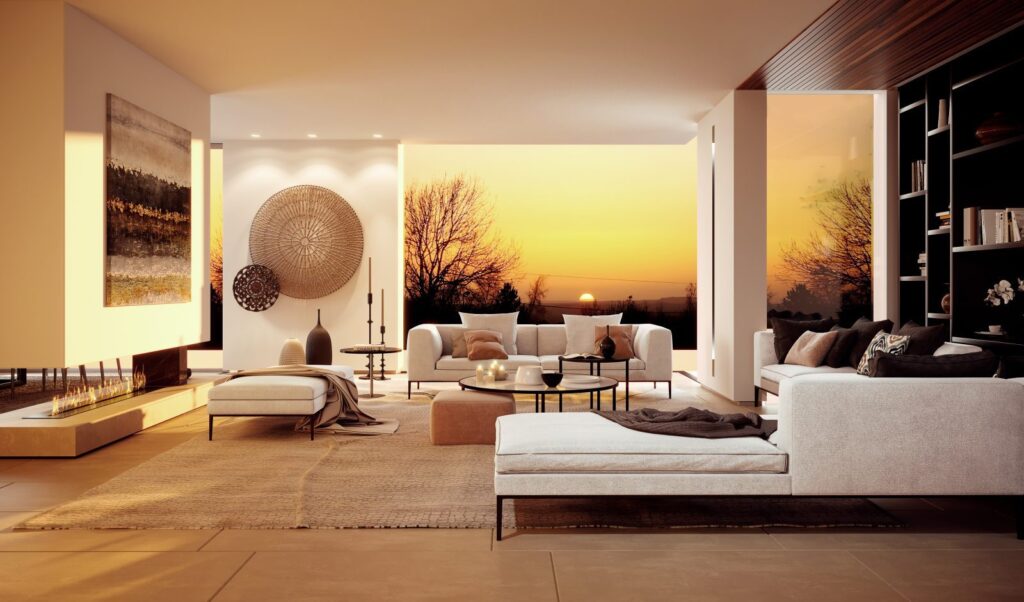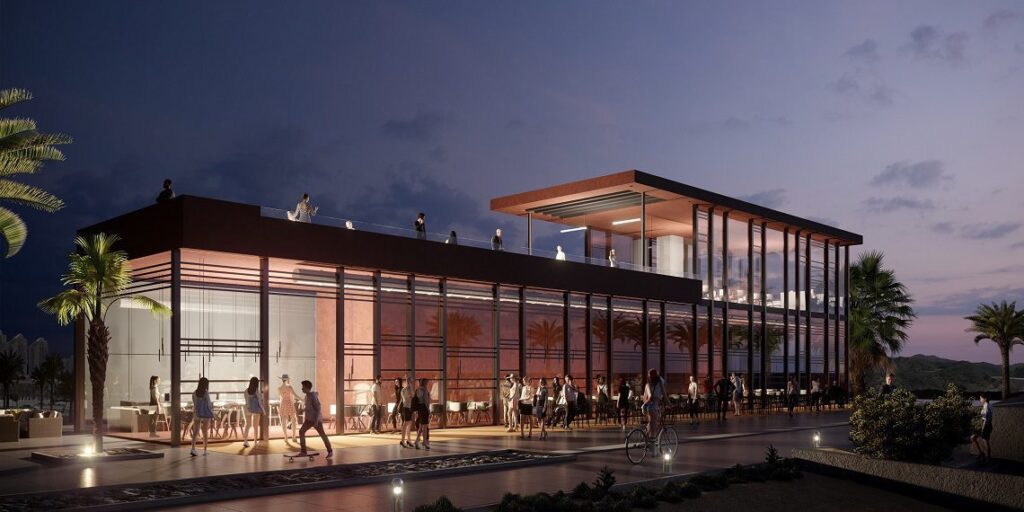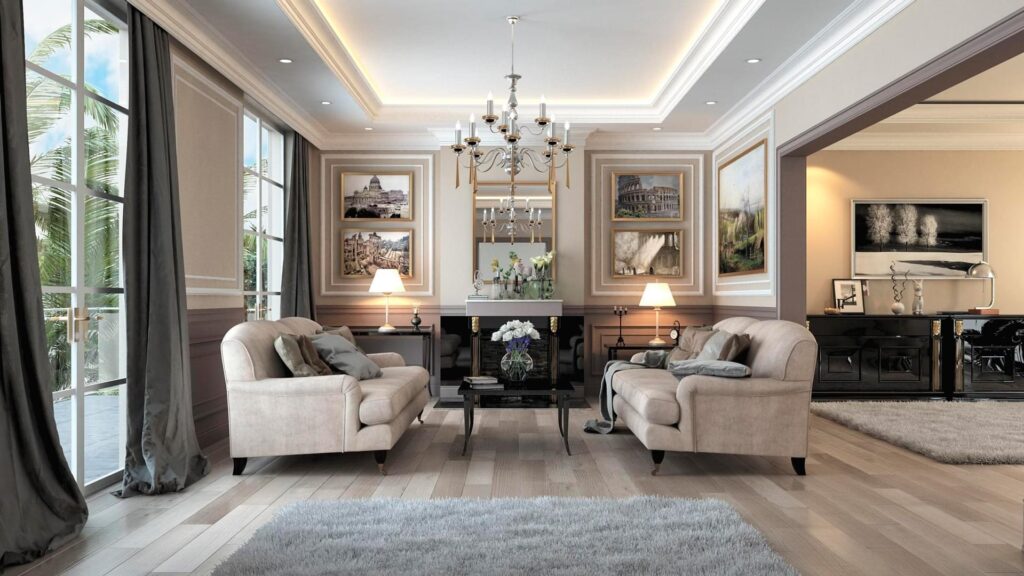One of the coolest things about photorealistic 3D rendering is that it can generate images that suit all possible needs of any client. The level of flexibility this technology offers is not achievable by any other means. A fascinating aspect is that even the same object, for example, a room, can look very different in terms of the atmosphere depending on the conditions. The general mood of the rendered picture depends on the time of the day, whether there are other elements on the screen and lighting.
These and many other factors significantly impact the way the viewer sees the picture and may even alter the general mood of the rendered picture, offering new feelings to customers. As follows, it is crucial for designers to be extremely attentive to the mood of the picture, to deliver the appropriate emotions to viewers, and achieve the desired effect from 3D visuals.

The atmosphere of the 3D rendered image has a crucial effect on the general mood of the picture, and there are plenty of ways to affect it. For example, different seasons, weather, lighting, level of detail, and other aspects play significant roles in tuning viewers to the proper mood. These days, professionals in the field of 3D visualization can deliver amazingly realistic images that tune the views to the right mood of the overall design. Therefore, allowing making impressive and effective presentations to clients and getting better chances of signing new deals. Hence, today, we are covering the two chief factors that capture an atmosphere that tunes viewers to the desired mood.
Time of the Day
The time of the day strongly affects the mood of a rendered image. In fact, one of the first things is to decide which time of the day should be represented in the picture. Let’s check the options artists have to tune the picture to the right mood.
- Midday/Late Morning
Midday and late morning lighting allow showing the true colors of all objects in the picture. Midday is the most universal and, at the same time, the most popular option. Hence, it is frequently used by designers to this day. The crucial aspect here is that midday offers enough natural light for 3D rendered pictures. Therefore, it offers a great way for a designer to show the interior or any desired object from its most superior side.
- Sunset
Sunset is the best time of the day to give a 3D realistic rendering of a romantic atmosphere. It’s warm and cheerful colors allow placing special accents on desired objects in the room. For example, it allows making especially beautiful highlights on metallic and glassy surfaces. While looking beautiful, sunset renders are habitually used with Midday and Late Morning ones.
- Night
The nighttime setting fulfills a significant role in photorealistic rendering. In the majority of cases, nighttime renders are used to show the designer’s view on artificial illumination to viewers. Therefore, the main accent is placed on the ceiling lights, torchiers, chandeliers, etc. Another interesting aspect is that the night renders allow drawing the viewer’s attention to lightened objects and divide the room into several sections. Additionally, this time of the day demonstrates a clear difference between bright or warm, diffused or direct, and colored or white lighting.

Level of Detail
The level of detail is key to any successful interior 3D design rendering, as it helps to add a special mood to the rendered object. Image details allow showing real individuality and suit the highest customer requirements. However, the level of detail is an extraordinarily complex procedure, and designers need to have a clear feeling between “not enough details” and “too many of them.” Each of the options that we are going to cover is effective and allows us to capture the required atmosphere.
- Low
Photorealistic 3D rendering can look good at any level of detail. For example, a low level of detail allows putting accents on the main objects of the picture. Such elements can be main furniture, decorations, and so on. This option makes the design look polished, clean, and neat.
- Medium
This level of detail allows the creation of a more live-looking 3D render. Therefore, in the majority of cases, this level of detail is used to add more realism to the image. The most critical aspect here is to make the final design look consistent when it comes to style.
- High
A high level of detail is suitable for certain concepts and styles. The reason being is a high level of detail can distract attention from the most important parts and objects. This may result in viewers struggling to comprehend the concept of the design. Therefore, overflowing a 3d rendering picture with designs can result in a completely ruined atmosphere of the 3D rendered picture.

Final thoughts
Without a doubt, the atmosphere is the key to success in effective 3D rendered images. By implementing the right methods to create the appropriate atmosphere, it is possible to tune viewers practically to any desired mood. Therefore, this improves the chances of bringing the famous “wow effect.”
